Not every barbell is going to be the same size.
Some are longer and thinner, while others are shorter and thicker.
So in this guide, I’ll cover the basic specs of the most common barbells so you never have to guess what kind of barbell you’re working with.
Let’s get started!
RELATED – Top 38 Best Barbells For Your Home Gym 2023
Table Of Contents
What is a barbell?
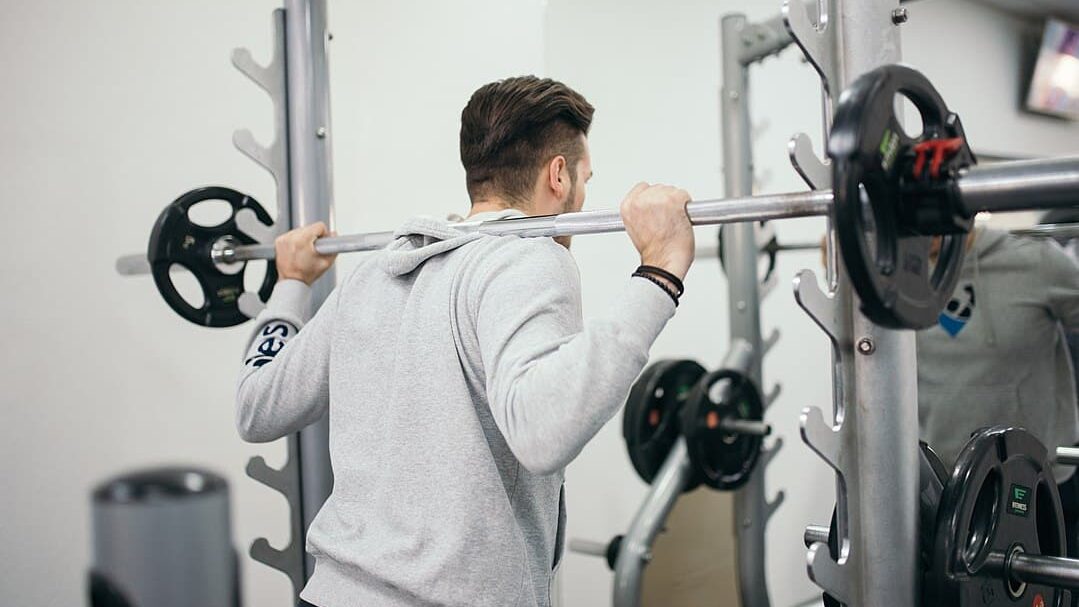
First up, what even is a barbell?
Barbells are straight steel rods made to lift heavy weights.
They have a knurled shaft to grip onto, collars to add weight plates to, and allow you to perform a variety of compound lifts.
The most common are powerlifting movements (Squat, Bench Press, and Deadlift); as well as the Olympic lifts (Snatch, Clean, and Jerks).
There are different types of barbells that allow for better performance with powerlifting or Olympic lifting movements, and even hybrid barbells that excel at both!
Common Types Of Barbells
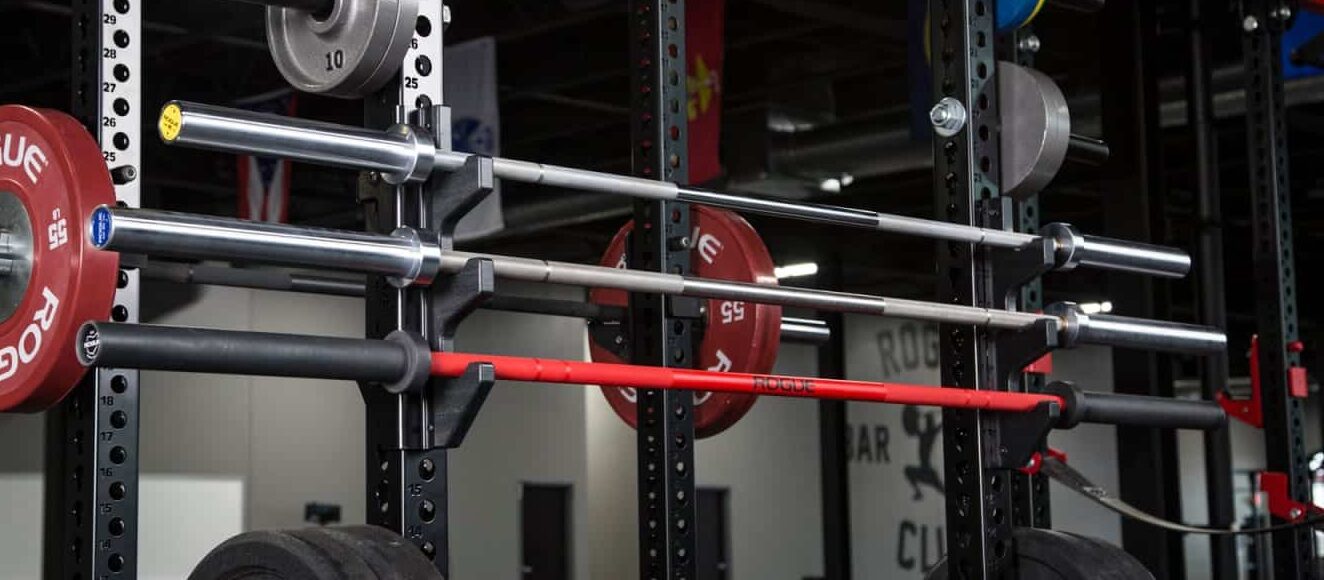
Most of you probably know what a standard and Olympic barbell are.
While the term Olympic bar is commonly used to describe any barbell with rotating 2″ sleeves, there are actually some differences you need to be aware of!
Here are the most common barbells.
- Standard Barbell
- Olympic Bars
- Men’s Barbell
- Women’s Barbell
- Multipurpose Bars
- Men’s Barbell
- Women’s Barbell
- Powerlifting Bars
- Squat Barbell
- Deadlift Barbell
- EZ Curl Bar
I’ll cover what each one of them is for; as well as the different sizes, how much they weigh, and more!
Standard Barbell
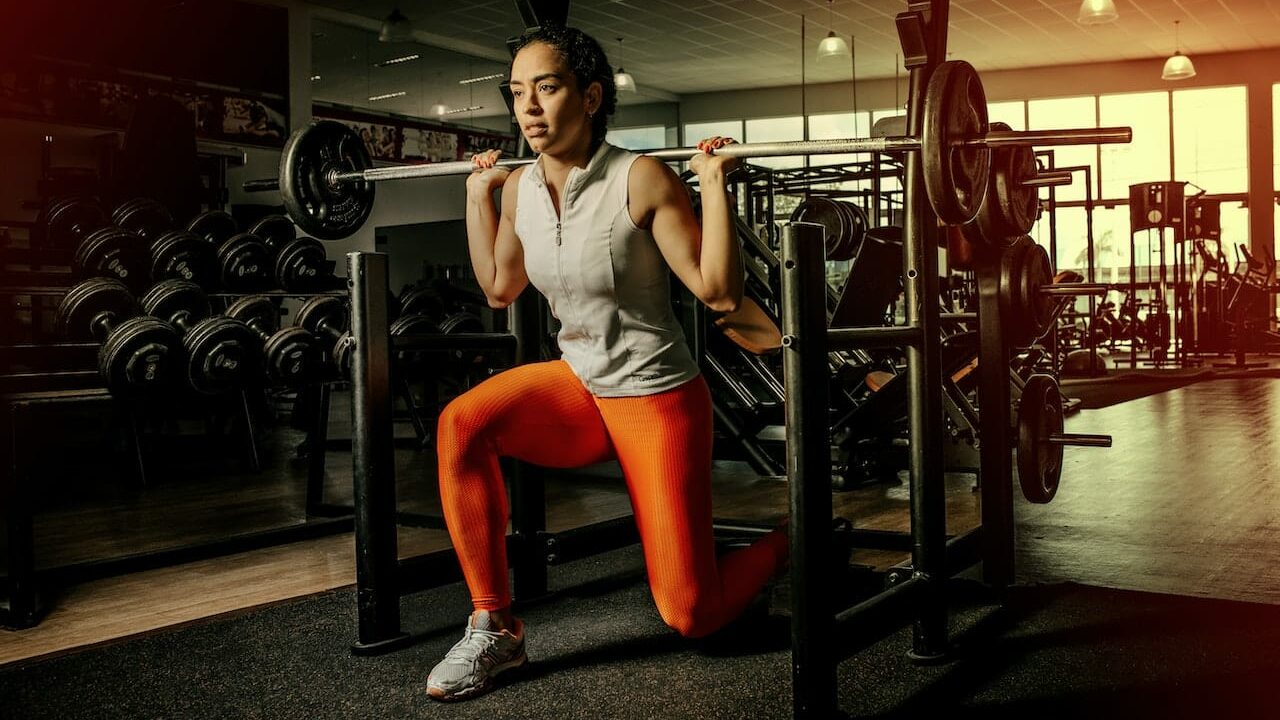
A standard barbell is much different than an Olympic barbell.
The biggest difference is the 1″ diameter across the entire bar, as well as lacking rotating sleeves.
The main problem with this is that you can’t just throw any Olympic weight plates onto it.
This 1″ diameter across the sleeves means you have to use standard plates which have a 1″ hole instead of 2″.
Standard plates are going to be cheaper because they aren’t as durable.
So while standard bars and plates may be fine for lighter exercises, I don’t recommend you use them for heavy compound exercises.
Specs
- Weight – 15-25 lbs
- Length – 4′-6′
- Shaft Diameter – 1″ (25mm)
- Knurling
- More passive knurling than Olympic barbells
- With or without center knurling
- Whip – Very little whip
- Knurl Marks – Single knurl marks
Olympic Barbell
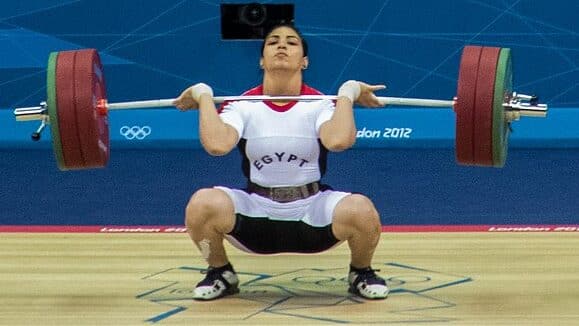
Not to be confused with the blanket term “Olympic barbell”, Olympic Weightlifting bars are exactly what they sound like.
A barbell designed specifically to excel at Olympic Weightlifting.
This type of Olympic barbell has a thinner shaft which allows the barbell to flex much more to assist in the Snatch as well as the Clean and Jerk.
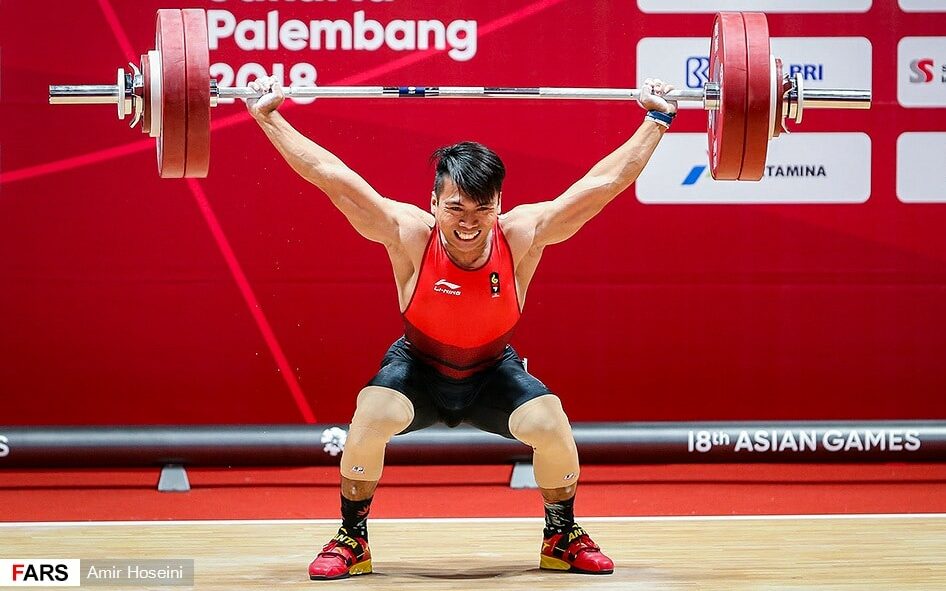
Men’s and women’s versions of this type of barbell exist as well.
An Olympic bar for men is heavier, thicker, and longer; while an Olympic bar for women is lighter, thinner, and shorter.
Specs
- Weight
- Men’s – 20kg (44lbs)
- Women’s – 15kg (33lbs)
- Length
- Men’s – 7’3″ (86.6″)
- Women’s – 6’7″ (79″)
- Shaft Diameter
- Men’s – 28mm
- Women’s – 25mm
- Knurling
- Training barbells – moderate, competition barbells – aggressive
- Men’s – center knurling, Women’s – no center knurling
- Knurl Marks – IWF
- Whip – Tons of whip for Olympic lifting
- Sleeve Rotation System – Needle Bearings
Multipurpose Bars
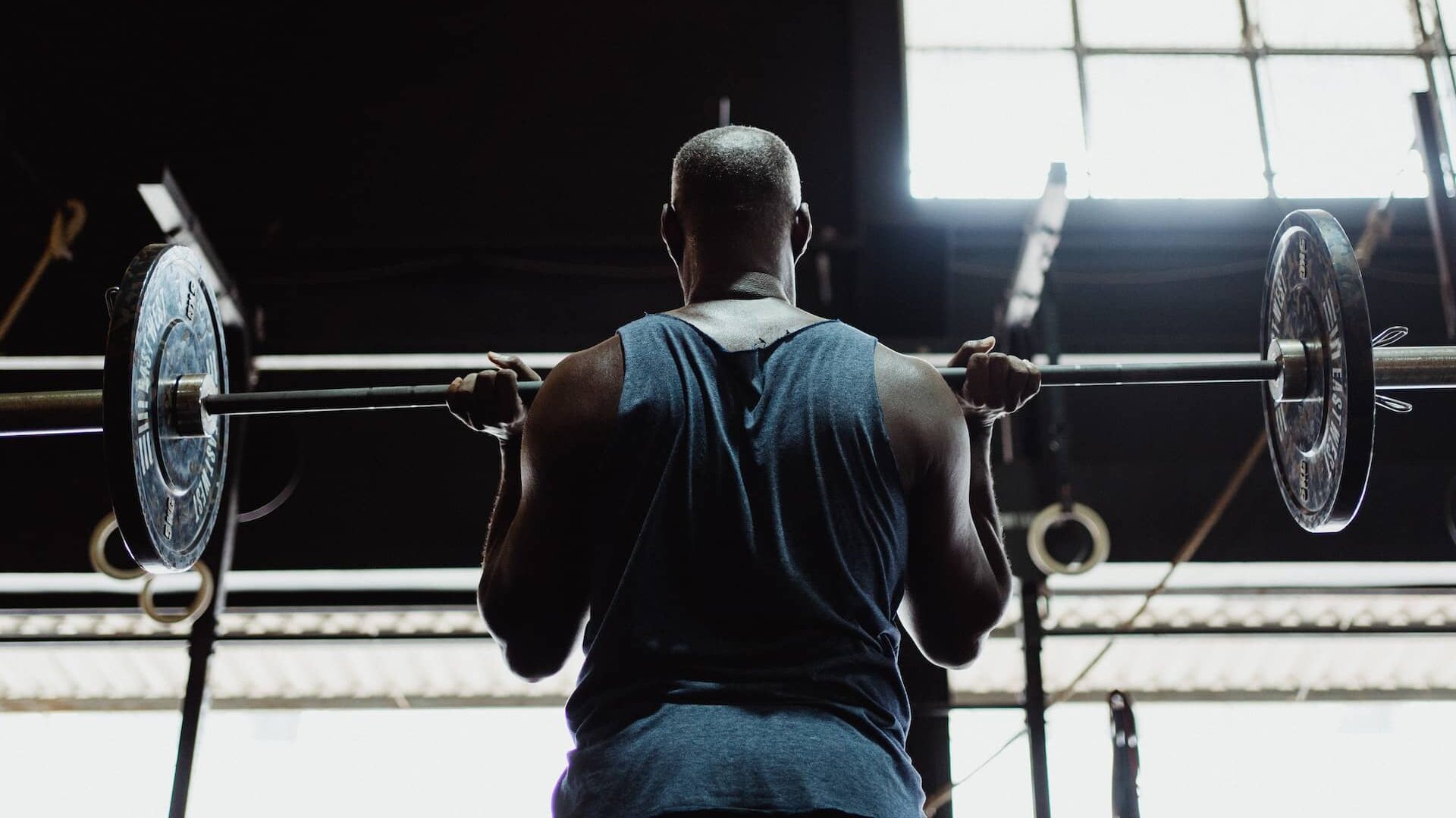
Multipurpose bars, also known as CrossFit, hybrid, or all-purpose bars; are made to handle all types of lifts.
They’re basically a mix between an Olympic weightlifting barbell and a powerlifting barbell.
Multipurpose barbells also have men’s and women’s versions just like Olympic bars.
Men’s bars are going to be built a little heavier, longer, and have a thicker shaft.
Women’s bars are going to be the opposite to allow female lifters to grip the barbell easier and have more whip at lighter loads.
Specs
- Weight
- Men’s – 20kg (44lbs)
- Women’s – 15kg (33lbs)
- Length
- Men’s – 7’3″ (86.75″)
- Women’s – 6’7″ (79.1″)
- Shaft Diameter
- Men’s – 28.5mm
- Women’s – 25mm
- Knurling –
- Moderate knurling
- No center knurling
- Knurl Marks – Dual Knurl Marks
- Whip – Moderate whip
- Sleeve Rotation System – Hybrid Bearing
Powerlifting Bar
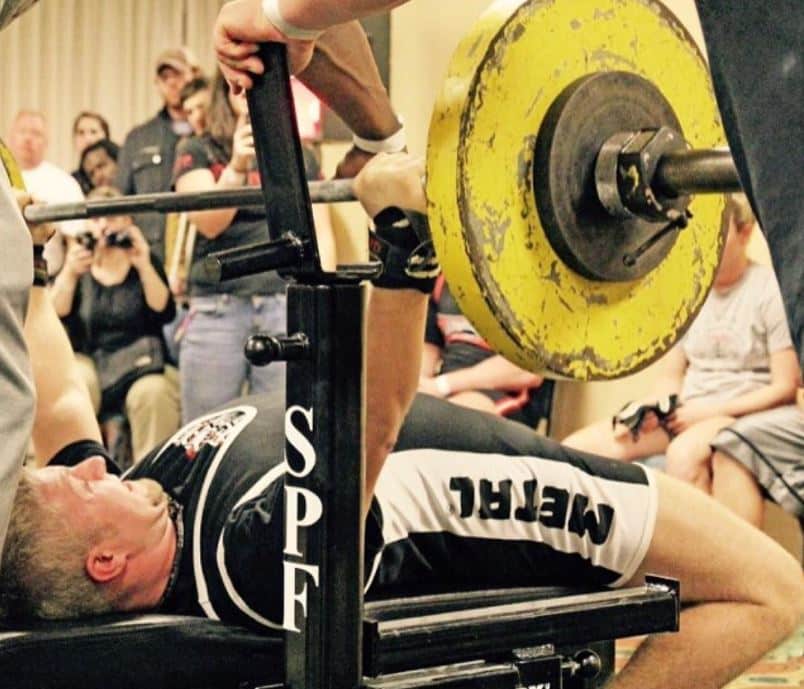
Powerlifting barbells are designed to perform the Powerlifts (Squat, Bench, & Deadlift).
These types of barbells are going to have the same length and shaft diameter across the board.
There are no men’s or women’s power bars so they’re all going to be 45 lbs, have a shaft diameter of 29mm so the barbell is stiff and doesn’t flex, and have a length of around 7’3.
A powerlifting barbell is great overall for the Squat and Bench Press, but you’re better off investing in a longer and thinner Deadlift bar.
Specs
- Weight – 20kg (44lbs) or 45lbs
- Length – 7’3″ (86.5″)
- Shaft Diameter – 29mm
- Knurling
- Moderate/Aggressive Knurling
- Center Knurling
- Knurl Marks – IPF
- Whip – Low Whip & Flex
- Sleeve Rotation System – Bushings
Deadlift Bar
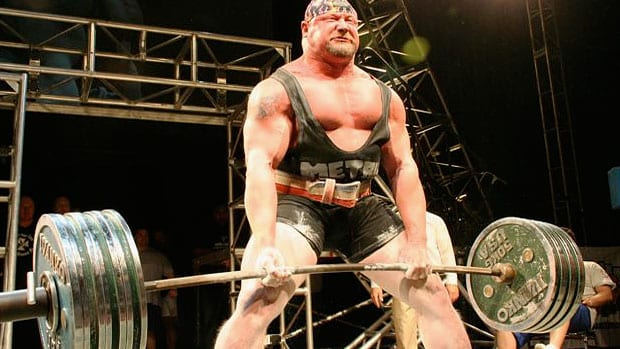
Deadlift bars are built specifically to improve performance while Deadlifting.
The shaft is going to be thinner to allow for a better grip and more whip while doing your Deadlifts.
It’s also much longer than any other basic Olympic barbell. Allowing you to Deadlift from a higher starting position while the barbell flexes.
Just like all power bars, deadlift barbells are only built to a single specification.
They’re usually 45 lbs, and have a massive length of around 90.5″.
All in all, if you want to get better at Deadlifts, Deadlift bars are a great investment.
Specs
- Weight – 20kg (44lbs) or 45lbs
- Length – 7’7″ (90.5″)
- Shaft Diameter – 27mm
- Knurling
- Aggressive Knurling
- No Center knurl
- Knurl Marks – IPF
- Whip – Even more whip than a weightlifting bar to start the pull from a higher point.
- Sleeve Rotation System – Bushings
Squat Barbell
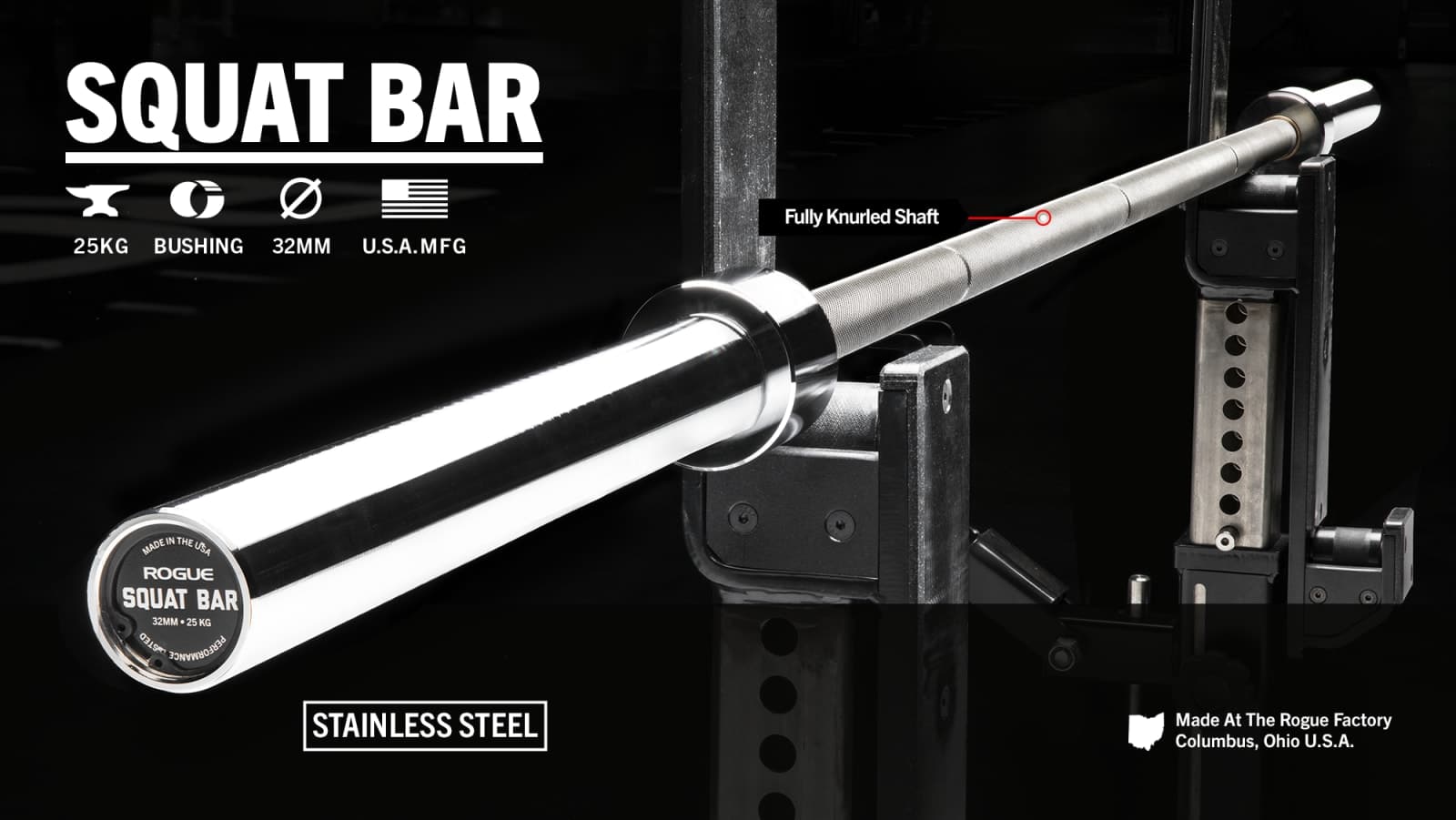
Squat bars are designed to be much stiffer than any other Olympic barbells.
You want the barbell to be as stable as possible on your back while performing the Squat. So a barbell that doesn’t flex much at heavy loads isn’t going to be much safer than a whippy Olympic bar.
They also have a lot more aggressive knurling across the shaft to grip onto your upper back much better.
Rogue Fitness even sells squat bars that have no smooth portions on the shaft at all.
It’s completely knurled so the barbell can grip even easier on your back.
Specs
- Weight – 25kg (55lbs)
- Length – 7’10” (94.49″)
- Shaft Diameter – 32mm
- Knurling
- Aggressive knurl
- Less smooth sections on the bar than a typical Olympic barbell
- Knurl Marks – IPF
- Whip – Virtually zero whip, super stiff bar
- Sleeve Rotation System – Bushings
EZ Curl Barbell
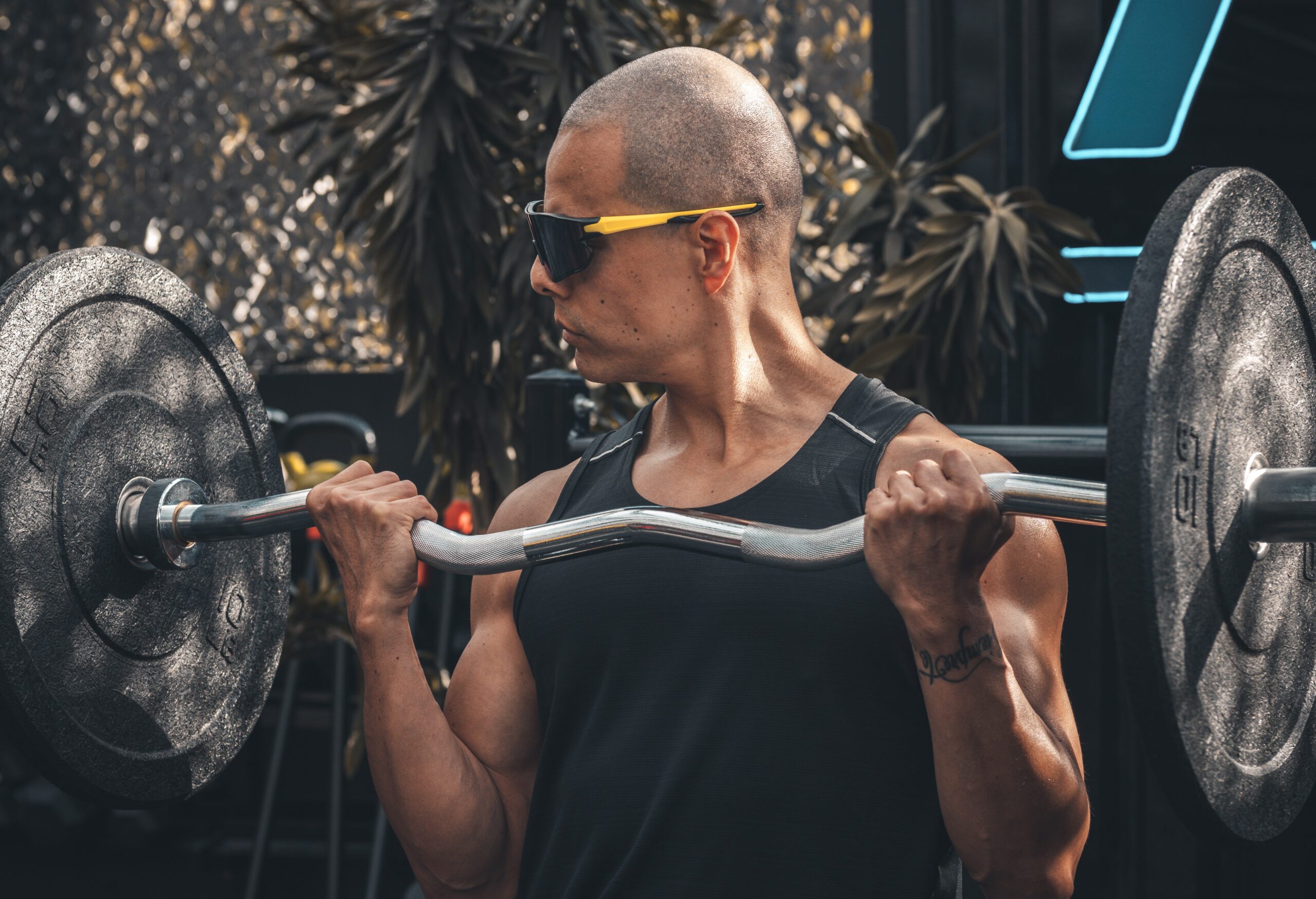
EZ Curl bars are made for the barbell curl and can even be used for tricep extensions as well.
This barbell has bends in the shaft that reduce torque on your wrists and elbows while curling.
There really isn’t a standard construction for EZ Curl bars but you can usually find them between 15-30 lbs with a length between 47″-55″.
There are also rackable EZ curl bars which are obviously going to be even longer to rack into a power rack.
Specs
- Weight – 6.8kg-13.6kg on average (15-30lbs)
- Length – 3’11”-4’7″ on average (47″-55″)
- Rackable curl bars are obviously longer than this usually
- Shaft Diameter – 28-30mm
- Knurling
- Moderate/Aggressive knurl
- No center knurl
- Sleeve Rotation System – Bushings
Barbell Specs Comparison Chart
Now that we have all of the specs laid out for the different types of barbells, here is a chart that will make it easy for you to compare them.
| Weight | Length | Shaft Diameter | |
| Standard Barbell | 15-25 lbs | 4′-6′ | 1″ (25mm) |
| Olympic Weightlifting Bars | Men’s – 20kg (44lbs) | Men’s – 7’3″ (86.6″) | Men’s – 28mm |
| Women’s – 15kg (33lbs) | Women’s – 6’7″ (79″) | Women’s – 25mm | |
| Multipurpose Bars | Men’s – 20kg (44lbs) | Men’s – 7’3″ (86.75″) | Men’s – 28.5mm |
| Women’s – 15kg (33lbs) | Women’s – 6’7″ (79.1″) | Women’s – 25mm | |
| Powerlifting Barbell | 20kg (44lbs) or 45lbs | 7’3″ (86.5″) | 29mm |
| Deadlift Bar | 20kg (44lbs) or 45lbs | 7’7″ (90.5″) | 27mm |
| Squat Bars | 25kg (55lbs) | 7’10” (94.49″) | 32mm |
| EZ Curl Bar | 6.8kg-13.6kg (15-30lbs) | 3’11”-4’7″ (47″-55″) | 28-30mm |
What is the Recommended Barbell Size for the Bench Press?
- Standard Choice – Olympic barbell, 7 feet in length, 28mm diameter (men), slightly less for women.
- Specialized Options – Thicker 29mm power bars, multi-grip bars, cambered bench bars.
- Additional Info – Your choice should consider personal preferences, training goals, and physical requirements.
- Detailed Guide – For in-depth insights, visit What Size Barbell Should I Use For The Bench Press?
Frequently Asked Questions
Conclusion
Did this guide help you out?
If so, let me know in the comment section below, right now!
Until next time,
-Dante